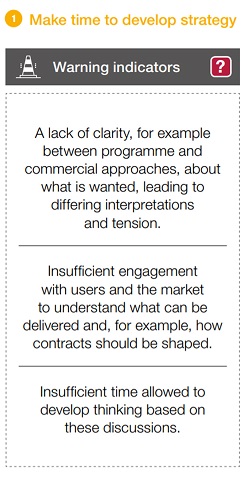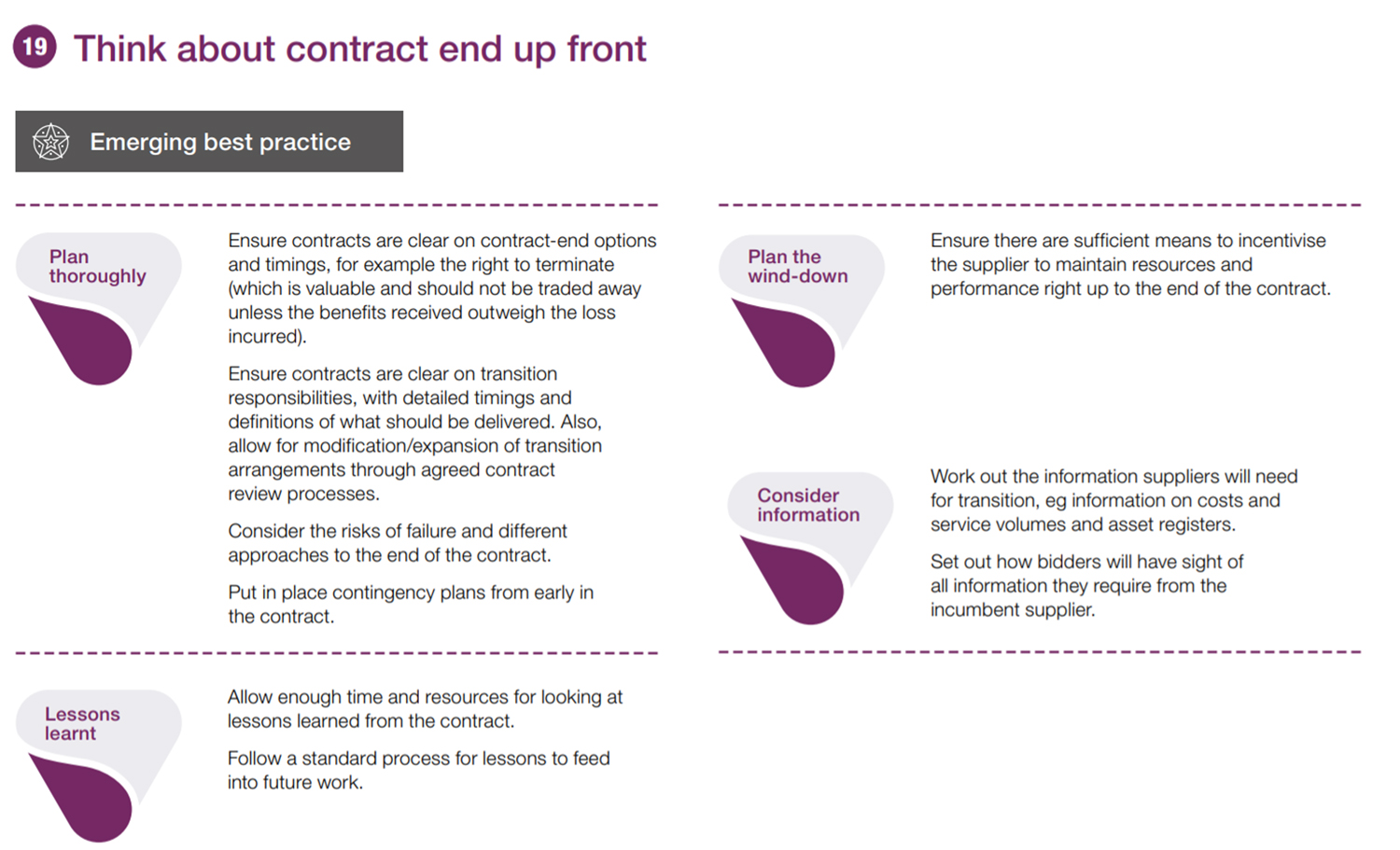 Billions of pounds of cost increase due to contractual change, delays introducing communication networks for our emergency services, potential strains on Army personnel – our recent reports illustrate the huge importance of getting contracts right, and what organisations need to do if they go wrong. They also reinforce the principles discussed in previous posts in our Contract insights series: the great value of information and the crucial need to act intelligently, get risk allocation right and take sufficient time to plan upfront for all scenarios.
Billions of pounds of cost increase due to contractual change, delays introducing communication networks for our emergency services, potential strains on Army personnel – our recent reports illustrate the huge importance of getting contracts right, and what organisations need to do if they go wrong. They also reinforce the principles discussed in previous posts in our Contract insights series: the great value of information and the crucial need to act intelligently, get risk allocation right and take sufficient time to plan upfront for all scenarios.
Getting the contract right
Outcome-based payments, a prime contractor model, national or regional contracting –organisations have multiple choices around the contractual mechanism they adopt. Over the last six months, we’ve seen how the choice of contractual model affects the risks to be held and managed by public sector organisations, and the importance of getting this right.
Commercial approach proved inappropriate for the nature of services
The latest of our reports on transforming rehabilitation described how, for Probation Services, the Ministry of Justice (MoJ) designed outcome-based contracts with payment by results for reducing reoffending. It aimed to encourage community rehabilitation companies to innovate. However, this approach was not well suited as it took two years for data on reoffending to become available.
In addition, changes in reoffending could not be directly attributed to contractors as the likelihood of reoffending is also influenced by other services, such as support with housing, employment and substance misuse. This approach was at odds with MoJ’s low risk appetite for failure due to the role of probation services in protecting the public and delivering court sentences. Ultimately, the lightly specified contracts hampered MoJ’s ability to hold providers to account for poorly performing services.
Contractual model increased programme delivery and cost risks
Our recent Completing Crossrail report assessed this large, complex programme to run new rail services around London. In August 2018, Crossrail Ltd announced that the programme could not be delivered on time and in December 2018, the Department for Transport announced that cost increases had resulted in a £2.8 billion increase in funding. We found that:
- The programme involved 36 main contracts, which increased delivery and cost risks. Crossrail Ltd did not require individual contractors to manage interfaces with other contractors. Consequently, it took on greater risk and had to compensate contractors for delays that occurred on other contracts, on which their work depended. Crossrail Ltd had planned to manage the resultant risks of handling a large portfolio of contracts through using a contractor.
- Changes to the design of construction and systems installation work, and changes to contractors’ delivery schedules cost around £2.5 billion between 2013 and 2018. Settlement of accumulated compensation events with contractors accounted for nearly £1 billion cost increases.
- During 2015 and 2016, some key contracts were moved from a target price to a cost reimbursement basis. This meant that Crossrail Ltd removed the key incentive on contractors to minimise costs and took on the financial risk itself.
The frequent re-planning of the programme, combined with increasing interfaces between contracts, meant that contractors continued to raise compensation events, and costs continued to increase. After it had announced that it would not open the central section in December 2018, Crossrail Ltd began negotiating fixed price contracts for some of the remaining work to improve certainty about costs. However, this form of contract means that Crossrail Ltd risks losing commercial levers to ensure that contractors prioritise completion of Crossrail over other projects and opportunities.
 In Commercial and contract management: insights and emerging best practice (2016) we stressed the need for commercial organisations to take time up-front to develop a commercial strategy as the foundation for commercial success. We still believe that many, and perhaps most, commercial and contracting issues we see result from a failure to plan for and use the most appropriate commercial arrangements. Planning provides a basis for developing the contractual approach and identifying risks.
In Commercial and contract management: insights and emerging best practice (2016) we stressed the need for commercial organisations to take time up-front to develop a commercial strategy as the foundation for commercial success. We still believe that many, and perhaps most, commercial and contracting issues we see result from a failure to plan for and use the most appropriate commercial arrangements. Planning provides a basis for developing the contractual approach and identifying risks.
The Government Commercial Function outsourcing playbook (pdf) explains that complex outsourcing projects can take years of planning to get right and that the NAO has flagged insufficient time as an indicator of project failure. The good news is that there are warning indicators for not getting this right (see box).
Responding when the contract does not work
Admittedly, the NAO tends to focus on some of the riskiest and most challenging government contracts, often where things have not gone to plan. Challenges could result from an inappropriate contractual approach, external events or simply poor contract management. Some of our recent reports highlight how great the challenges can be, and the time and effort needed to respond when things go wrong.
1. Amending the performance regime and contract
Our investigation into Army Recruitment described how Capita had missed the British Army’s annual targets for recruiting soldiers every year since 2013 by an average of 30%, compared with 4% in the two years preceding the contract. This could lead to greater strain on existing personnel or reduce their ability to develop future capabilities. The Army penalised Capita for missing its recruitment targets, deducting £26 million of service credits between August 2015 and September 2018 (6% of Capita’s total contract payment), but this did not improve performance.
In April 2017, the Army agreed to lower Capita’s performance targets and reset the service credit deductions. The Army was already deducting the maximum service credits and considered there was little prospect of Capita’s performance improving without concessions. It agreed to reduce its targets for the number of recruits, from its assessment of what was required to a forecast of what Capita was most likely to achieve which represented a 20% reduction on the Army’s requirement in 2017-18.
The Army also changed the basis on which it calculated service credit deductions. As part of this re-negotiation, the Army and Capita agreed to introduce changes to improve performance although, as at September 2018, they were still missing targets for recruiting new soldiers.
2. Contract renegotiation
We found that on the Emergency Services Network programme, it is taking longer than expected to renegotiate the main contracts. In June 2018, the ESN programme team found that its contractual agreements with EE and Motorola were “…complex, in places inconsistent within and between them and ultimately now undeliverable”. While resetting the programme strategy and timetable, the Home Office has been renegotiating these contracts. This resolved some issues immediately, and project work continued throughout 2018. However, negotiations to agree the full set of contractual changes are behind schedule and the extent to which the Home Office’s objectives for renegotiation will be met is unclear. According to the timetable at the start of the reset, the Home Office was to sign revised contracts with Motorola and EE by December 2018. The estimate at the time of our report was May 2019. Until the scope and timescales of work are agreed and contracts are signed, the Home Office may not be able to manage suppliers effectively or hold them to account.
3. Early termination
On transforming rehabilitation, the Ministry of Justice (MoJ) decided to terminate community rehabilitation contracts (CRCs) 14 months early given the risk of multiple provider failures. In June 2018, the MoJ commissioned work to understand CRCs’ financial positions and to develop options for terminating the contracts. It found that, as at March 2018, CRCs faced collective losses of £294 million over the life of the contracts compared to expected profits of £269 million when CRCs had bid; a difference of £563 million.
The MoJ concluded that these losses would result in providers withdrawing services, unacceptable further deterioration in performance and, potentially, multiple providers becoming insolvent. The agreement to terminate the contracts will cost taxpayers a further £171 million, at least. When added to the costs of changing the contracts in 2017-18, our report estimated the total additional cost to be at least £467 million. The full termination costs will not be known until December 2020.
These recent reports demonstrate the continuing importance for contracting organisations to act intelligently by knowing what they want to achieve, understanding how contracts are performing and recognising how and where issues arise, so as to be able to respond appropriately.
We’ve seen how upfront planning can help address these issues through asking questions such as:
- In what circumstances could a contract be terminated? Or extended?
- What can be learned from the contract and how will this be captured?
- What information and data will be needed so that we can make a judgment and ensure a subsequent supplier could take over?

Since late 2016, we have continually updated our insights and emerging best practice through our guides on commercial relationships, available on our Commercial capability and contract management page, and our Contract insight series of blogs.
We will continue sharing insights from our work. We welcome your comments and invite you to contact us to discuss any of these issues in more detail. Please do sign-up to receive email alerts on future blogs to keep up-to-speed with our emerging thinking.



